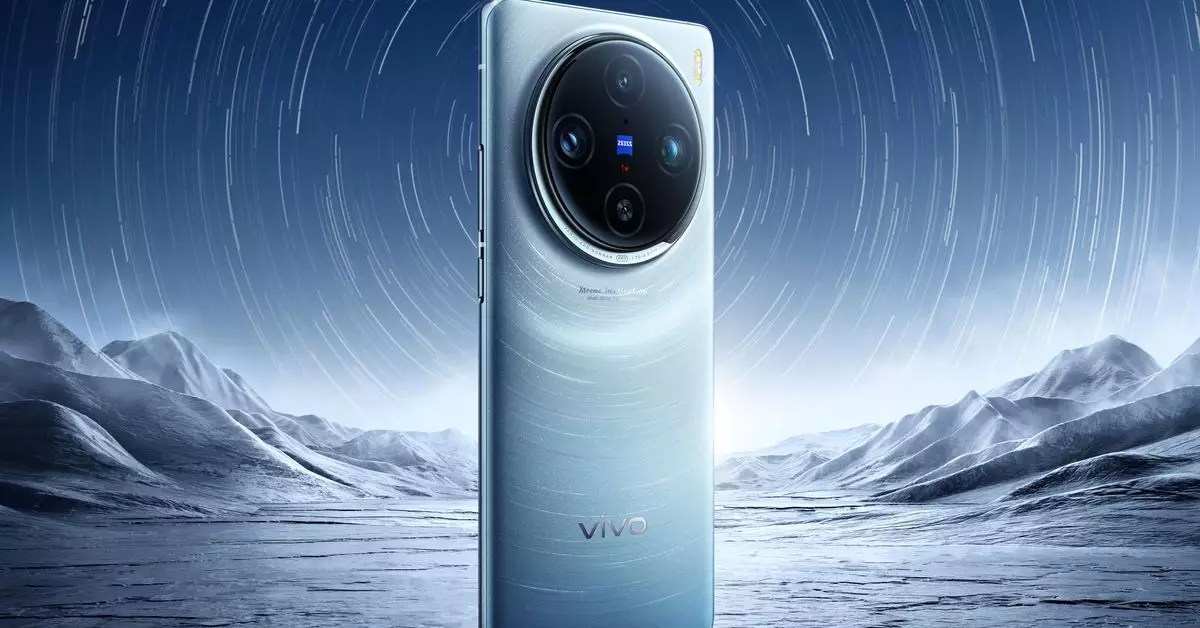The ever-evolving world of smartphone technology continues to push boundaries in terms of camera capabilities. Vivo, a prominent player in the consumer tech industry, has recently launched its latest flagship smartphones, the Vivo X100 and X100 Pro. These devices, which were initially released in China on November 13th, are now set to captivate international markets, including Southeast Asia and Europe. While both smartphones boast impressive features, it is the emphasis on lens improvements that sets them apart from their predecessors and competitors.
The Vivo X100 Pro is equipped with a staggering 50-megapixel one-inch-type main camera sensor, surpassing the industry norm for smartphone cameras. To ensure consistent sharpness and quality, Vivo has incorporated “Optical Precision Calibration” into this model. Furthermore, the X100 Pro’s telephoto camera now offers a 4.3x optical magnification, a significant upgrade from the 2x magnification found in the previous model. This telephoto lens also includes Zeiss’ APO designation, which aims to reduce chromatic aberration. Additionally, the inclusion of a floating lens element enables users to capture detailed close-up photographs with the telephoto lens.
While the Vivo X100 lacks the heightened camera specifications of its Pro counterpart, it still showcases notable features. This model features a 50-megapixel 1/1.49-inch-type main camera sensor and a 64-megapixel 3x optical telephoto lens. Although it does not possess a floating lens element like the X100 Pro, the lenses on both devices benefit from Zeiss coatings. Both smartphones also come equipped with 50-megapixel ultrawide cameras and a secondary imaging chip. However, it is worth noting that the X100 Pro utilizes the latest V3 imaging chip, enabling the capture of stunning 4K cinematic portrait videos.
The Vivo X100 and X100 Pro are both powered by MediaTek’s Dimensity 9300 flagship chipset. This powerful chipset ensures seamless performance and efficient utilization of the smartphones’ advanced camera capabilities. Additionally, both devices feature a large 6.78-inch OLED panel with a 120Hz refresh rate. This immersive display ensures vibrant visuals and smooth transitions, enhancing the overall user experience. Furthermore, both smartphones possess an IP68 rating, providing dust and water resistance, adding durability to these flagship devices.
Vivo’s commitment to lens quality is admirable. The X90 Pro, an earlier model, demonstrated promise when pitted against the Samsung Galaxy S23 Ultra in camera tests. However, some lens aberrations were noted, tarnishing the overall image quality. By prioritizing lens improvements, Vivo aims to overcome this limitation and deliver exceptional image results. The incorporation of larger image sensors offers advantages such as reduced baseline noise performance and more natural bokeh effects. While competitors often rely on a “more-pixels-more-better” approach, Vivo recognizes the significance of lens quality in producing superior image outcomes.
Vivo’s strategy indicates a clear understanding of the ever-growing demands of smartphone users. By focusing on lens enhancements, Vivo strives to provide an exceptional camera experience to its customers. While the X100 and X100 Pro are impressive additions to their lineup, the true test will come when they face off against upcoming rivals such as the Samsung Galaxy S24 Ultra. The future holds exciting possibilities as smartphone manufacturers continue to push the boundaries of camera technology, and Vivo is certainly a key player in this ongoing evolution.
Vivo has yet to disclose the exact pricing for the European market, but it has confirmed that the X100 Pro will retail for HK$7,998 in Hong Kong. This translates to approximately €937 or $1,024. Meanwhile, the non-Pro X100 will be available at the price of HK$5,998, approximately $768 or €702.
The Vivo X100 and X100 Pro are remarkable smartphones that place a strong emphasis on lens improvements. With their outstanding camera capabilities, both devices are set to captivate consumers across international markets. By prioritizing lens quality, Vivo continues to push the boundaries of smartphone photography and anticipates a promising future in the competitive consumer tech landscape.


Leave a Reply